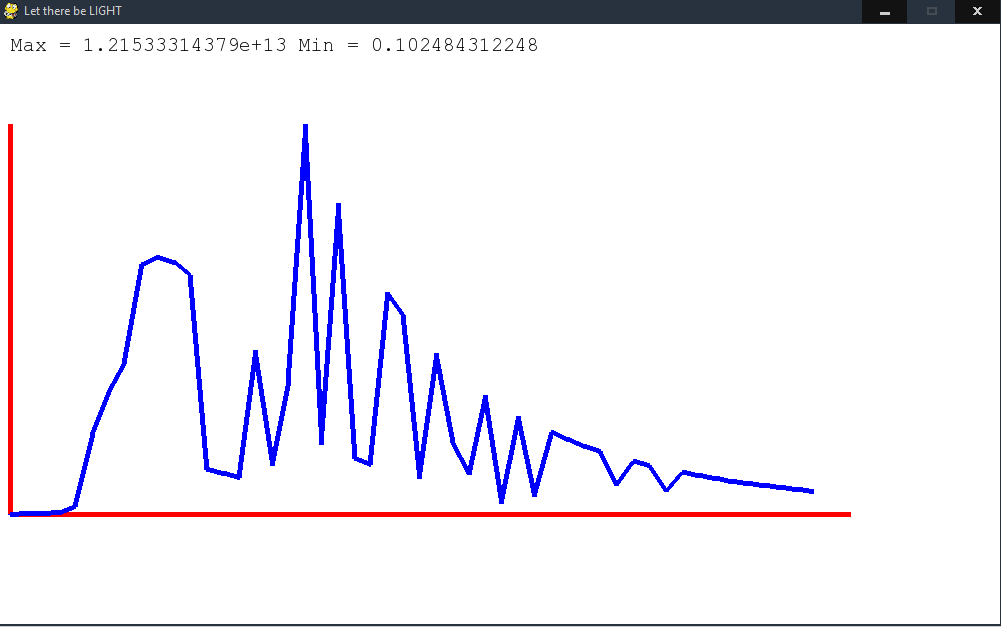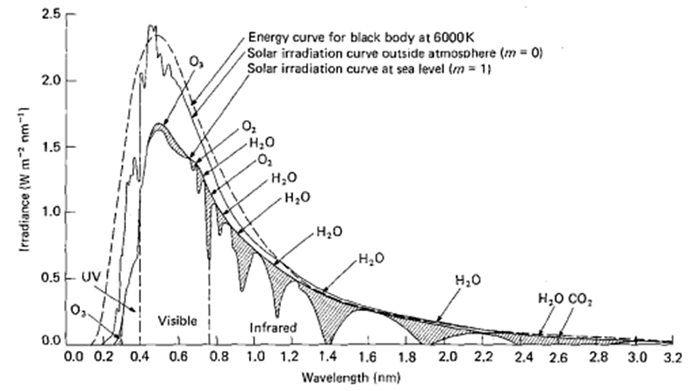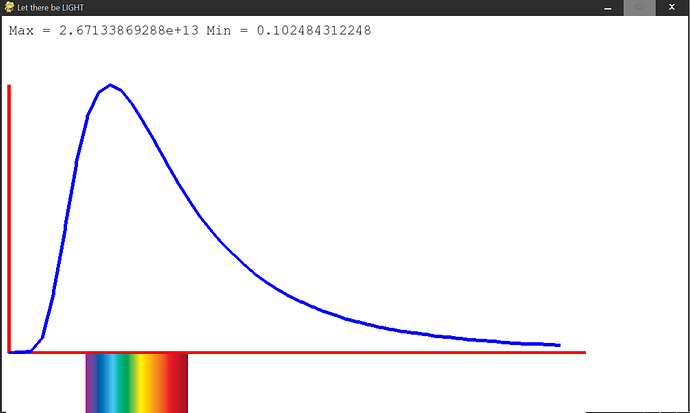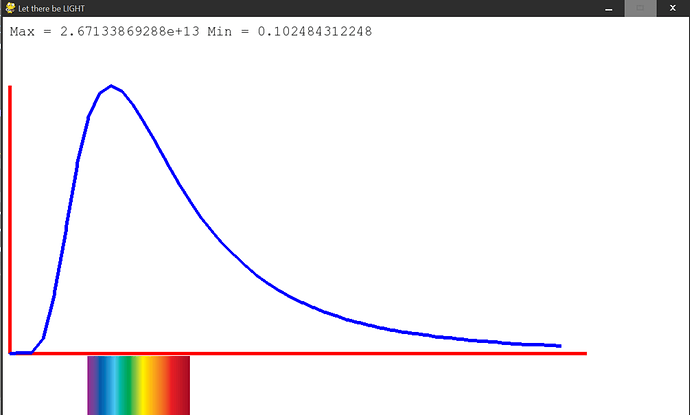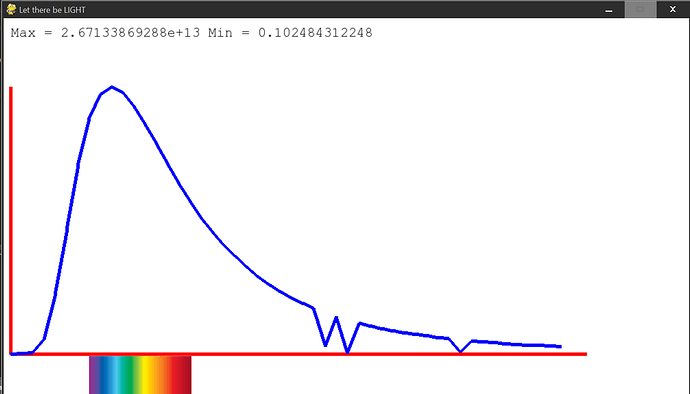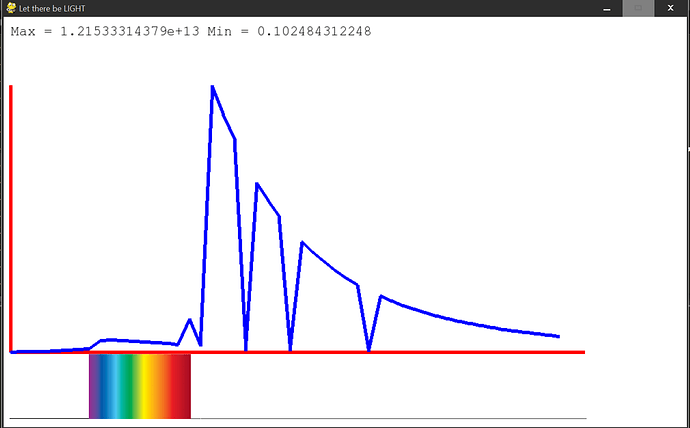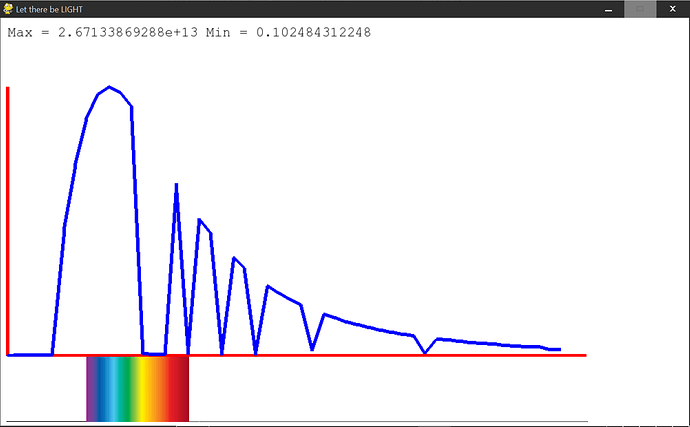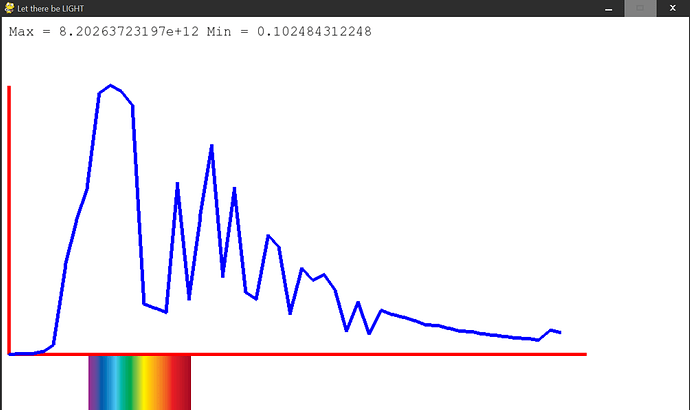Here is some guessed data for gas absorption in the earth’s atmosphere. This is then going to be used to work out a fudge factor, so the spectral cacluations come out right for the earth, which can then be used to extrapolate for other planets.
N2 :
Base = 0.5
Microns, Fraction Absorbed, Fraction of Base Absorbtion
0.05, 0.8, 1.6
0.05, 0.8, 1.6
O2 + O3:
Base = 0.5
0.15, 0.2, 0.4
0.20, 0.2, 0.4
0.25, 0.2, 0.4
0.30, 0.2, 0.4
0.35, 0.2, 0.4
0.40, 0.3, 0.6
0.45, 0.3, 0.6
0.50, 0.3, 0.6
0.55, 0.3, 0.6
0.60, 0.3, 0.6
0.65, 0.3, 0.6
0.70, 0.3, 0.6
0.75, 0.3, 0.6
0.80, 0.5, 1
0.85, 0.3, 0.6
1.05, 0.2, 0.4
1.25, 0.2, 0.4
1.60, 0.2, 0.4
Water:
Base = 0.5
0.05, 0.2, 0.4
0.10, 0.2, 0.4
0.15, 0.2, 0.4
0.20, 0.2, 0.4
0.60, 0.2, 0.4
0.65, 0.2, 0.4
0.70, 0.2, 0.4
0.80, 0.2, 0.4
0.95, 0.5, 1
1.10, 0.5, 1
1.35, 1 ,2
1.85, 1, 2
2.40, 1, 2
2.45, 1, 2
Carbon Dioxide:
Base = 0.5
1.40, 0.3, 0.6
1.50, 0.1, 0.2
2.00, 0.5, 1
